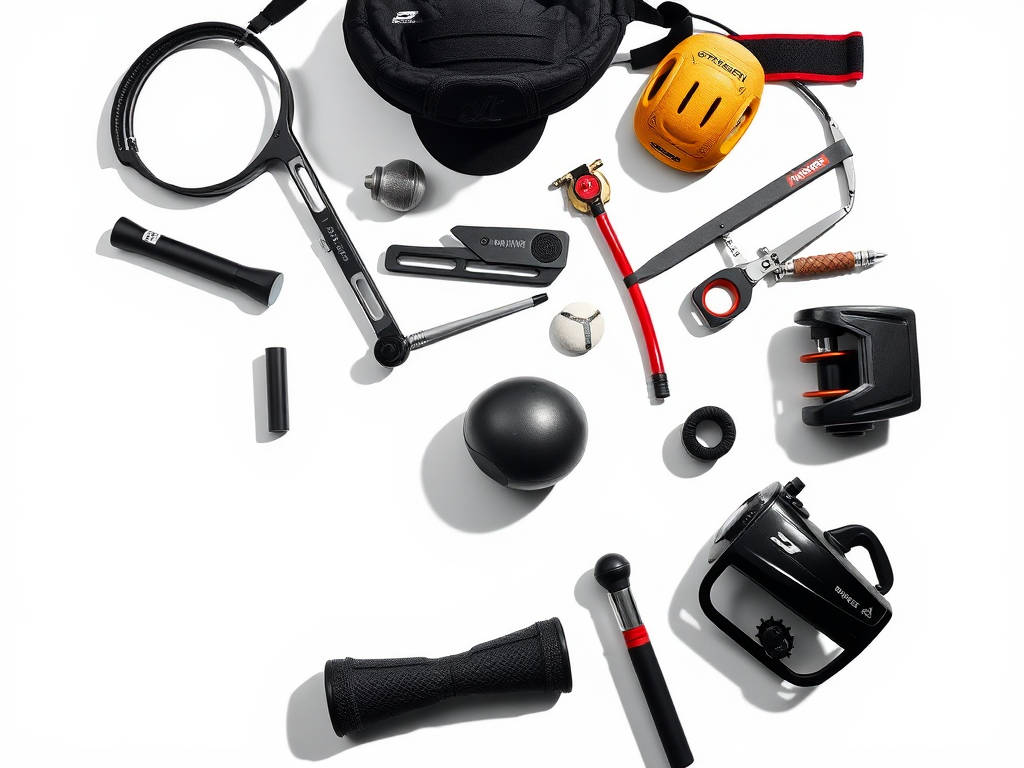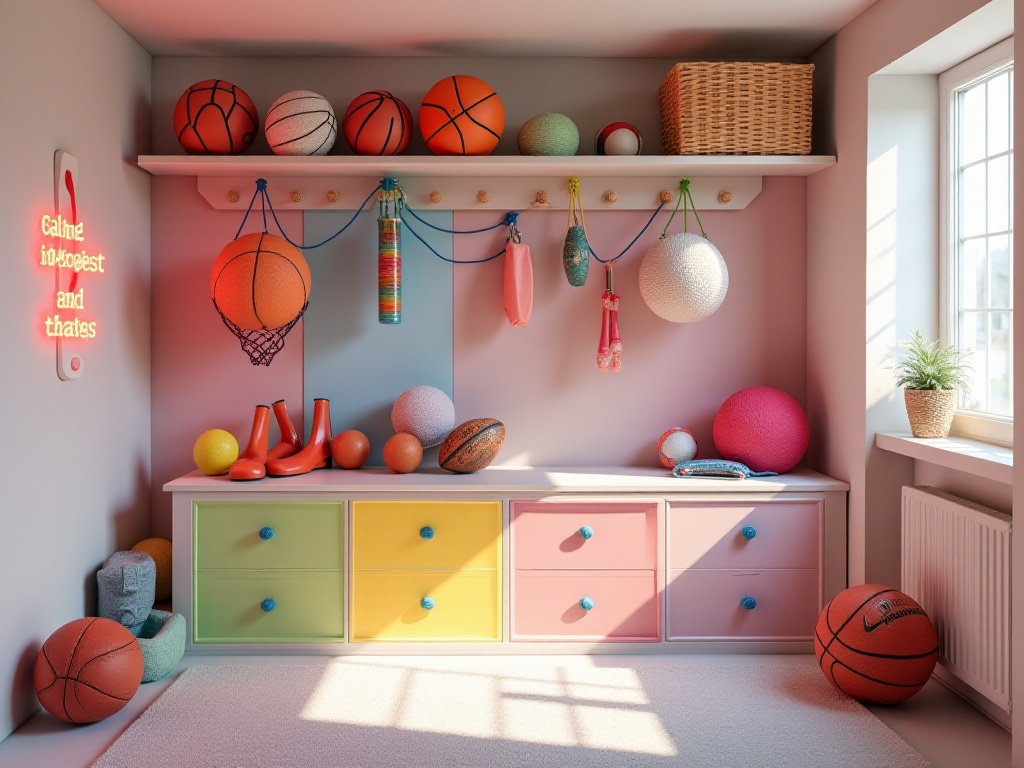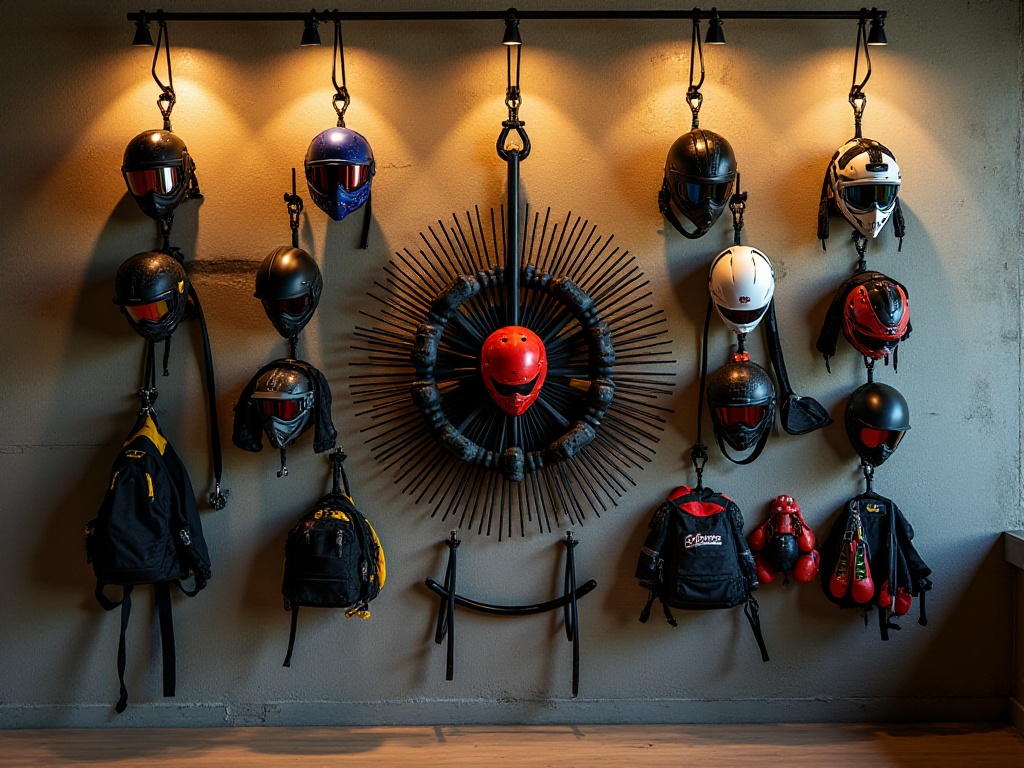Opening Chat
As a sports enthusiast, I deeply understand the frustration of improperly stored sports equipment. The struggle of rummaging through drawers for basketball shoes before a game, not knowing where your workout clothes are before a run, protective gear scattered everywhere... these issues are truly maddening! Especially when you're rushing to meet friends for sports, and end up spending half the day looking for equipment, leaving barely any time for actual exercise when you arrive. After years of trial and error, I've finally found an effective storage solution that I'd like to share with you in detail.
Car Storage
Car storage was a major pain point for me. I remember when my trunk was literally a storage room, with various sports equipment piled together chaotically: basketballs mixed with tennis balls, workout clothes tangled with protective gear, water bottles tipping over... Finding anything was like conducting an archaeological dig. Everything changed when I discovered the magic of foldable storage boxes.
I now use a three-tier foldable storage box. The top layer holds frequently used small items like wristbands, headbands, and towels; the middle layer is dedicated to workout clothes and spare clothing; the bottom layer is for sports shoes and larger equipment. Best of all, this storage box has an insulated compartment design where I can keep sports drinks and energy bars at the optimal temperature year-round.
The choice of storage box material is crucial. I initially bought a cheap canvas one that deformed quickly. Later, I switched to a thicker Oxford fabric version that's water-resistant, moisture-proof, and extremely durable - it's still in perfect condition after more than a year. Plus, this material is super easy to clean - just wipe it with a damp cloth.
To make storage more efficient, I added some special features to the box. I used Velcro to separate different areas, preventing items from flying around during sudden brakes. I also installed small hooks on the sides of the box for hanging equipment that needs to dry, like used wristbands or sweaty headbands.
Indoor Storage
Indoor storage is a whole other story. I've dedicated a "sports equipment zone" in my home, using drawer cabinets as the main storage solution. This drawer cabinet was custom-made to my specifications, with each drawer having a different depth. The top drawers are shallower for small items; the middle drawers are medium-sized for sportswear; the bottom drawers are deepest for large equipment.
I've put considerable effort into drawer organization. First is categorized storage - I've detailed all sports equipment by frequency of use and type. For example, the most frequently used training clothes are placed in easily accessible positions, while special equipment used occasionally is stored further back.
To keep things more organized in the drawers, I use many storage solutions. Drawer dividers are absolute must-haves in the storage world. I use them to divide each drawer into different-sized compartments, allowing me to arrange storage spaces according to item sizes. For instance, one compartment for socks, another for protective gear, and another for sports bras.
Besides dividers, I also use storage boxes. These boxes come in various sizes and fit perfectly into the spaces created by the dividers. I particularly like transparent storage boxes as you can see what's inside without opening them. Plus, these boxes usually come with lids to keep dust out.
For small items that tend to get mixed up, I prepared mesh bags. Things like headbands, wristbands, and finger protectors are sorted into different mesh bags. The bags are semi-transparent, making contents visible at a glance, and they're well-ventilated to prevent odors.
Wall storage is another method I highly recommend. I installed a multi-functional storage rack on the wall, which is incredibly practical. It consists of several horizontal bars of different lengths, each capable of holding various hooks. I mainly use it to store equipment that needs to be hung, like rackets and balls. This not only maintains the equipment's shape but also provides good ventilation.
What I'm most proud of is the full-length mirror I installed next to the storage rack. This allows me to check my outfit and condition while getting equipment - killing two birds with one stone. The mirror's position is carefully designed to avoid glare while making full use of natural light, making the whole space brighter and more spacious.
To maximize every inch of space, I installed a hook storage strip behind the door. This strip has over a dozen hooks for frequently used small items like keys, water bottles, and waist bags. This makes everything visible at a glance before leaving, eliminating the need to search around.
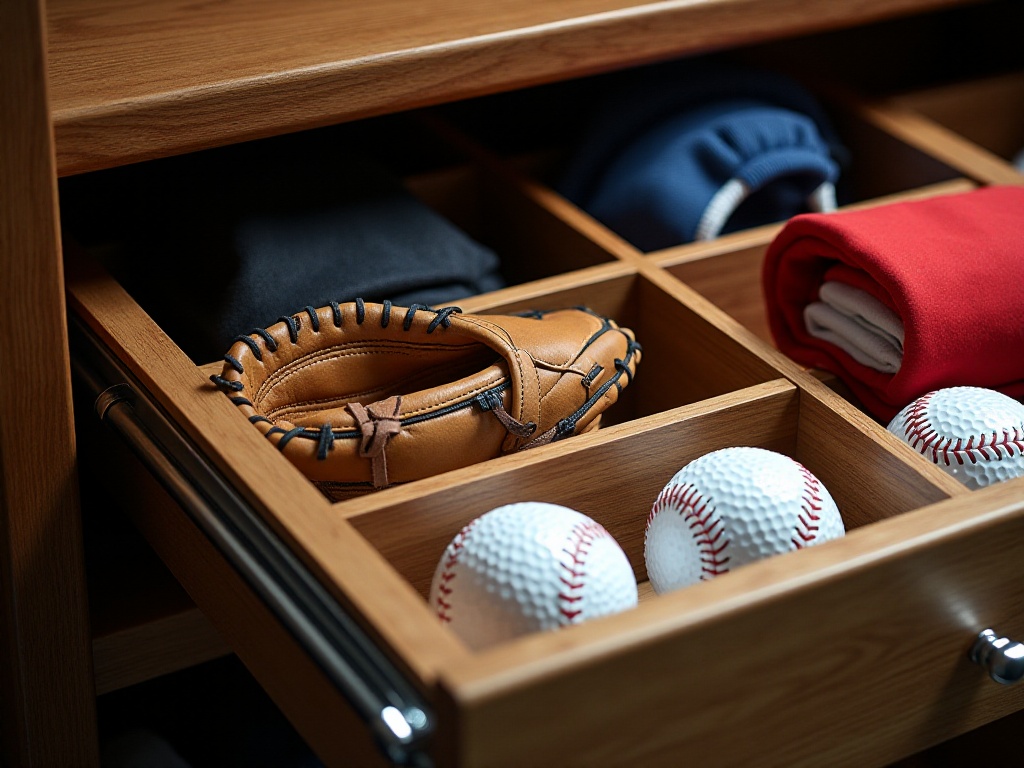
Maintenance and Care
When it comes to maintenance, this is key to extending the life of sports equipment. I've developed a habit of regular maintenance every weekend, spending about half an hour to an hour specifically caring for this equipment.
Cleaning comes first. For sportswear, I choose appropriate washing methods based on different materials. For technical fabric sportswear, I use neutral sports-specific detergent with water temperature around 30 degrees, which removes odors without damaging the fabric's functionality. After washing, I hang them in ventilated areas to air dry - never use a dryer as it seriously affects the fabric's elasticity and breathability.
For sports shoes maintenance, I have a complete process. First is cleaning the upper, using professional sports shoe cleaner with a soft brush. For the soles, I use a small brush to carefully clean dirt and debris from the treads. After cleaning, I stuff newspapers inside to absorb moisture, then air dry in a ventilated place. It's particularly important not to expose shoes to direct sunlight or high-temperature drying, as this can cause deformation.
Protective gear maintenance is also crucial. After each use, I wipe them down with mild cleaner, then dry with a towel. For gear prone to odors, I use the freezing method: place the gear in a sealed bag and freeze overnight. The next day, the odor is significantly reduced. I've been using this method for a long time with great results.
Ball equipment maintenance requires attention too. For basketballs, I wipe them with a clean towel after each use to remove dust and sweat. If they get muddy from outdoor play, I gently wipe with a slightly damp towel, then immediately dry with a dry towel. When storing, I maintain proper air pressure to preserve the ball's elasticity and shape.
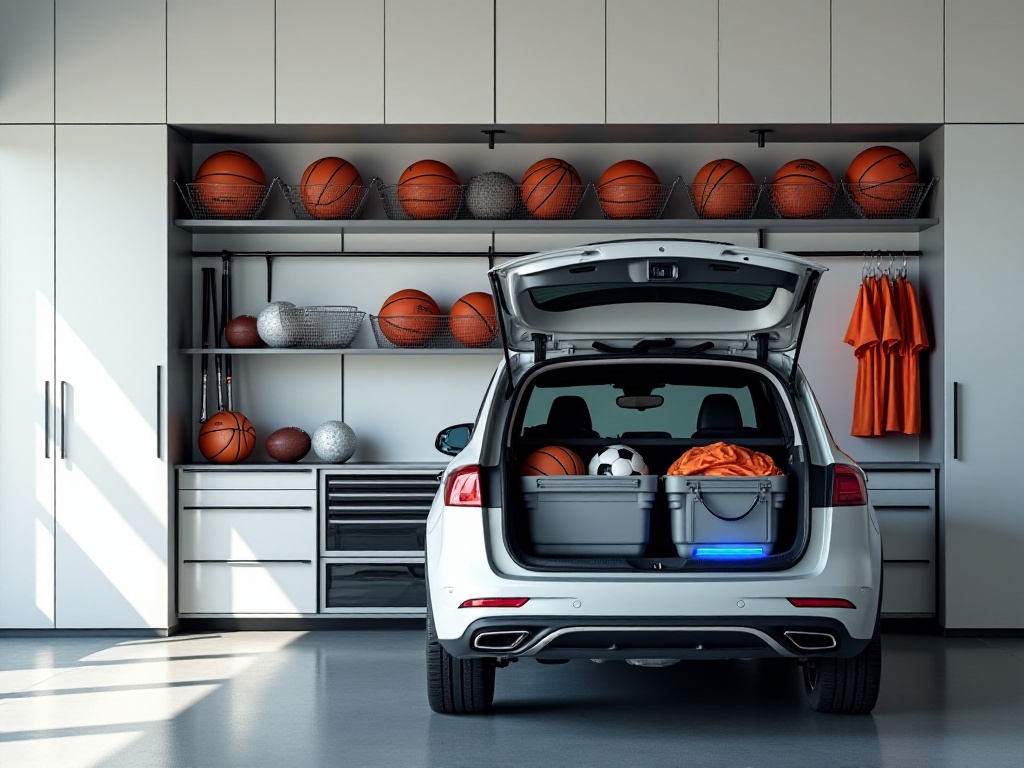
Usage Suggestions
Before establishing your storage system, I strongly recommend doing a thorough cleanup. Honestly, we often impulsively buy equipment we don't need or keep damaged equipment thinking we'll "fix it later," which takes up valuable storage space.
My cleanup principle is: seriously consider keeping equipment that hasn't been used for over six months. For damaged equipment, either repair it immediately or dispose of it. Through such cleanup, I discovered I actually need far fewer items, which helps avoid future impulse purchases.
When buying new equipment, pay special attention to size. I've seen too many injuries from using improperly sized equipment. For example, adults should use size 7 basketballs, not save money by using size 5. Tennis rackets also need to match your height and arm length.
Additionally, when buying storage items, I recommend choosing modular systems. The advantage is being able to adjust and expand as needed. When your sports equipment increases, you can easily add new storage modules without starting over.
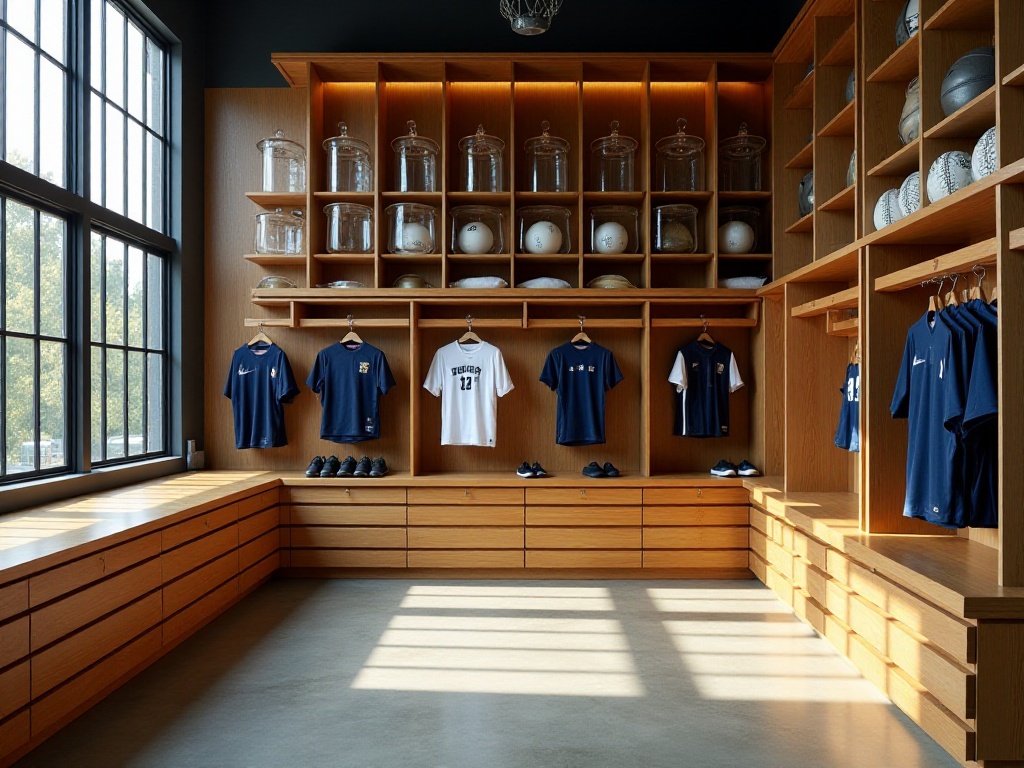
Experience Sharing
Through years of exploration, I've developed a "three-step" storage strategy. The first step is categorized storage, critically based on frequency of use and function. I put weekly-used equipment in the most accessible places, while seasonal equipment can go in less accessible spots.
The second step is choosing appropriate storage tools. Note that more expensive isn't always better - the key is matching your usage habits. If you frequently travel with equipment, portable storage boxes might suit you better than fixed cabinets.
The third step is establishing usage and maintenance habits. This step tests patience most as it requires changing existing habits. For example, cleaning equipment immediately after use rather than tossing it aside, and regularly checking equipment condition for timely maintenance.
Regarding economic benefits, I'll share my personal experience. Previously, my sports equipment often got damaged due to poor storage, requiring several replacements yearly. Since establishing a good storage system, my equipment lasts at least twice as long. Take my basketball shoes - they used to need replacement yearly, but now they're still in good condition after two-plus years.
Based on average sports enthusiast equipment configurations, a basic set (including sportswear, shoes, protective gear) costs between 3000-5000 yuan. With proper storage and maintenance, this equipment can last 3-5 years. In contrast, carelessly stored equipment might need yearly replacement. Calculated this way, good storage habits save at least 2000 yuan annually.
Conclusion and Outlook
After all this discussion, the most important aspect of storage is establishing a system that suits you personally. Everyone has different exercise habits and space conditions, so simply copying others' methods won't work. What's important is developing your own storage method based on actual needs.
Although establishing a good storage system requires time and effort, it's definitely worthwhile long-term. It not only makes your sports life easier and more enjoyable but also saves money. Most importantly, the satisfaction of seeing your sports equipment neatly and orderly arranged is priceless.
I hope these experiences help you. If you have any unique storage tips, please share them in the comments. Let's create a neater, more efficient sports life together!
Related articles


